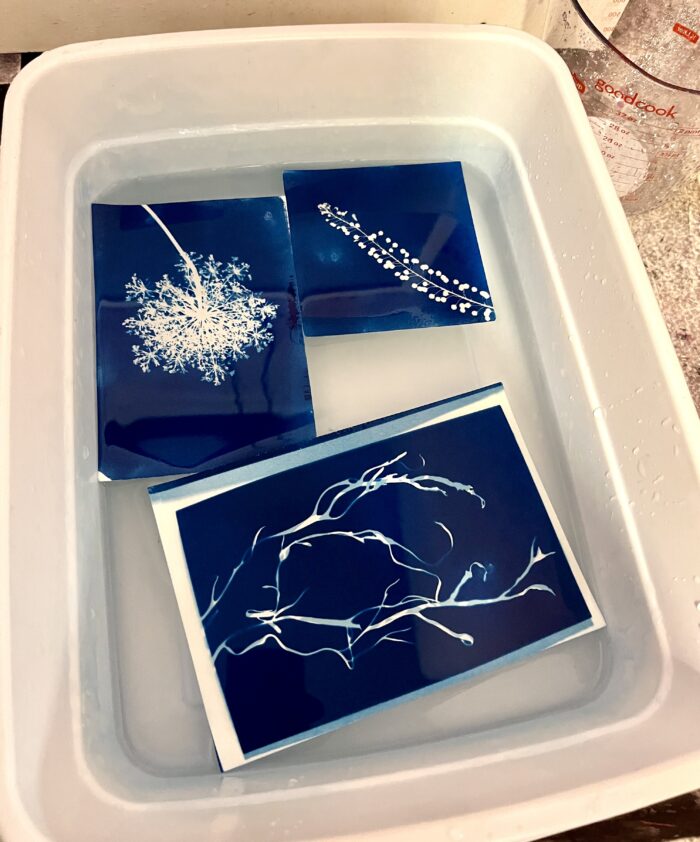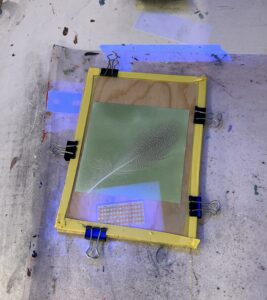I attended a cyanotype workshop a month ago in Maine, and it helped me to notice the world differently.



If you’re not familiar with cyanotype, it’s a photographic technique (one of the earliest!). A piece of paper is coated with some special chemicals, you lay an object (often a botanical object) on top of the paper, and then the paper is exposed to UV light. You then wash it with water, add some hydrogen peroxide, and voila! You have a lovely image of a feather or a bit of dried hydrangea with a background of dazzling deep blue (the “cyan” in the name).

It’s a very easy and accessible art form, and allows for a lot of flexibility and play. Most of the materials, with the exception of the chemical solution you coat the paper with, are cheap household items you probably already have lying around.
The best part, though, is the way it makes you notice and consider plants and twigs around you. Would this shape look thrilling in a cyanotype? How might the delicate translucence of this flower or leaf or feather translate in blue?

It’s so easy to glide through the world on autopilot: to be delighted and astonished by novelty, to notice new plants or flowers or architecture when you first arrive in a new place, and then for it all to fade quietly into the background so your brain can focus on more important things, like meal planning or which movie to watch tonight or how to resolve that thorny work problem.
Art is a useful way to kick your brain back into manual for a bit. To move more deliberately, to notice things and really look at them. My enhanced noticing from the cyanotype workshop didn’t last forever, but that just means I need to do more art to notice things properly again.

